
- By Natalie Gray
- ·
- Posted 26 Mar 2024
Fireside Chat #63: Optimising Developer Productivity
What is developer productivity? Is there an inevitable trade-off between speed and quality? How can organisations foster long-term productivity gains..
In this post I will attempt to cover fundamentals of Bare Metal Systems, Virtual Systems and Container Systems. And the purpose for doing so is to learn about these systems as they stand and also the differences between them, focusing on how they execute programs in their respective environments.
Let's think of our Bare Metal Systems as desktops and laptops we use on a daily basis (or even servers in server rooms and data-centers), and we have the following components:
Programs are stored on the hard drive in the form of executable files (a format understandable by the OS) and loaded into memory via one or more processes. Programs interact with the kernel, which forms a core part of the OS architecture and the hardware. The OS coordinate communication between hardware i.e. CPU, I/O devices, Memory, etc… and the programs.
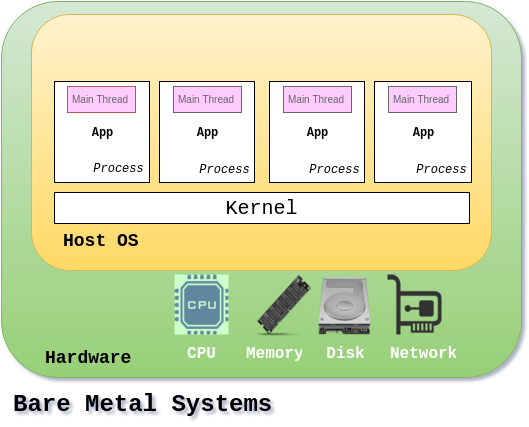
A more detailed explanation of what programs or executables are, how programs execute and where an Operating System come into play, can be found on this Stackoverflow page [2].
On the other hand Virtual Systems, with the help of Virtual System controllers like, Virtual Box or VMWare or a hypervisor [1] run an operating system on a bare metal system. These systems emulate bare-metal hardware as software abstraction(s) inside which we run the real OS platform. Such systems can be made up of the following layers, and also referred to as a Virtual Machines (VM):
It's like running a computer (abstracted as software) inside another computer. And the rest of the fundamentals from the Bare Metal System applies to this abstraction layer as well. When a process is created inside the Virtual System, then the host OS which runs the Virtual System might also be spawning one or more processes.
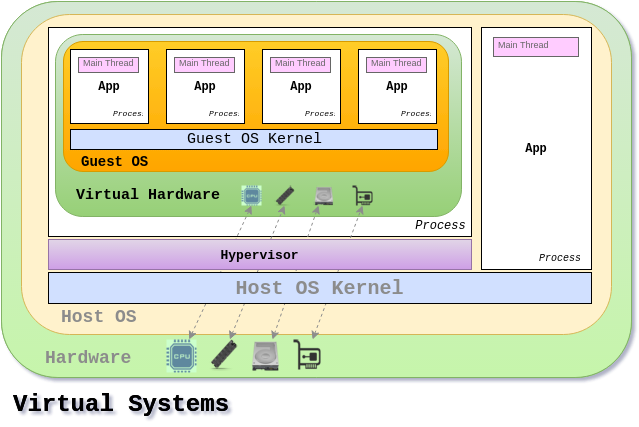
Now looking at Container Systems we can say the following:
A container creates an OS like environment, inside which one or more programs can be executed. Each of these executions could result in a one or more processes on the host OS. Container Systems are composed of these layers:
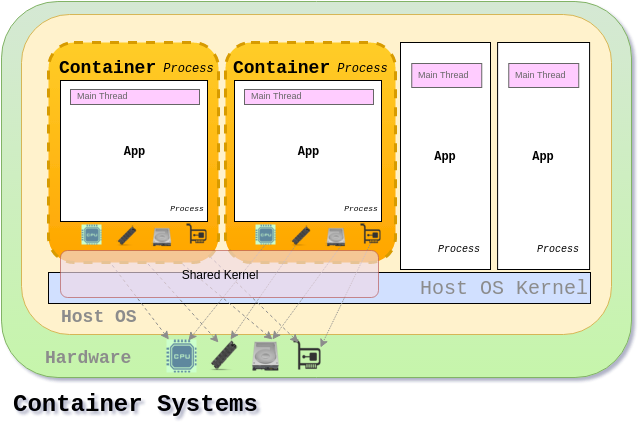
Looking at these enclosures or rounded rectangles within each other, we can already see how it is containers all the way through.
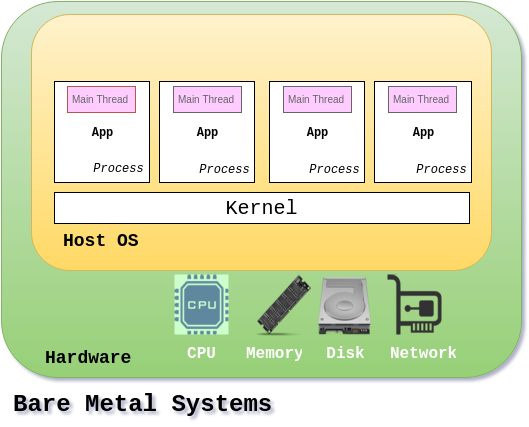

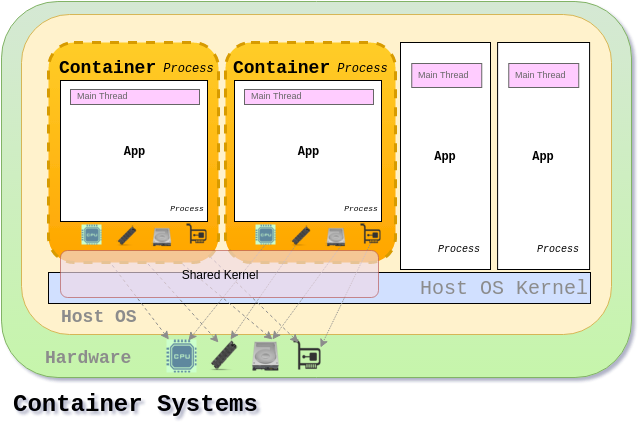
There is an increasing number of distinctions between Bare Metal Systems, Virtual Systems and Container Systems. While Virtual Systems encapsulate the Operating System inside a thick hardware virtualisation, Container Systems do something similar but with a much thinner virtualisation layer.
There are a number of pros and cons between these systems when we look at them individually, i.e. portability, performance, resource consumption, time to recreate such systems, maintenance, et al.
Thank you for your time, feel free to send your queries and comments to theNeomatrix369. Big thanks to my colleagues, our DevOps craftsman Robert Firek and craftsman David Hatanian from Codurance for giving invaluable feedback on my post and steering me in the right direction.

What is developer productivity? Is there an inevitable trade-off between speed and quality? How can organisations foster long-term productivity gains..

What is database refactoring for? What are the risks involved and how can we avoid them? Is it really beneficial to our systems? Cameron Raw,..

Codurance is pleased to announce it has achieved the AWS Partner Network Certification Distinction. This honour is only bestowed upon partners that..
Join our newsletter for expert tips and inspirational case studies
Join our newsletter for expert tips and inspirational case studies